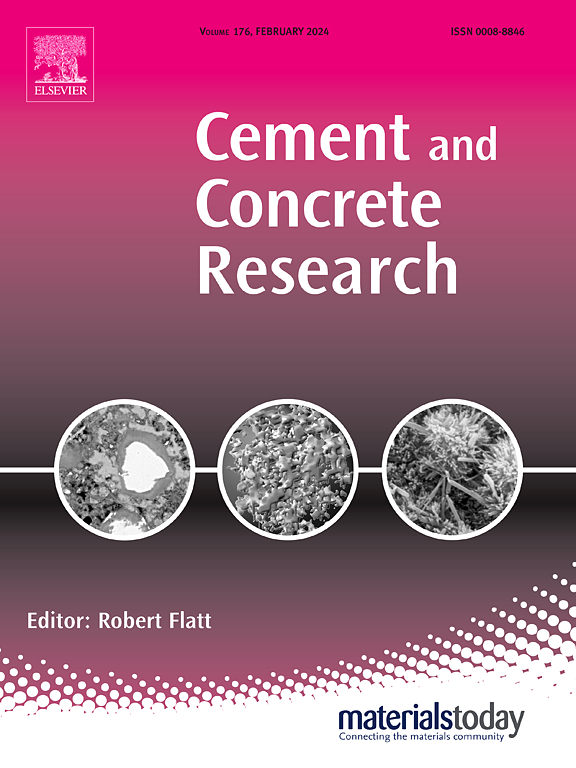Overlay transition zone in concrete repair: Insights into microstructural evolution and micromechanical properties
IF 10.9
1区 工程技术
Q1 CONSTRUCTION & BUILDING TECHNOLOGY
引用次数: 0
Abstract
Ultra-high toughness cementitious composites (UHTCC) are increasingly employed to repair and strengthen deteriorated concrete structures, yet the critical microstructural evolution and micromechanical properties of overlay transition zone (OTZ) remain underexplored. We report a comprehensive, curing time-dependent study of OTZ between cast and sprayed UHTCC and concrete substrates (CS). The findings reveal a dual-scale OTZ structure: (1) the narrow OTZ, impacted by the wall effect, and (2) the broad OTZ, comprising an air void-rich area, the narrow OTZ, and a reaction zone on the CS surface. The thickness of the broad OTZ, governed mainly by the air void-rich area, decreases over time to around 200 μm at 28 days in cast specimens. Spraying shows a dual effect on the broad OTZ, reducing interfacial gaps at 3 days by enhancing UHTCC-CS contact while generating a thicker (300 μm) air void-rich zone at 28 days. Ion migration from UHTCC to the CS surface increases the local mean elastic modulus through the formation of secondary hydrates, like calcium hydroxide and C-(A-)S-H gels. Ulteriorly, we discuss and summarize the evolution mechanisms driving the microstructure and micromechanical properties of OTZ. These insights lay the foundation for the bottom-up, cost-effective engineering regulation of OTZ in concrete repair.
混凝土修补中的覆盖过渡区:微观结构演变和微观力学性能的见解
超高韧性胶凝复合材料(UHTCC)越来越多地被用于修复和加固劣化混凝土结构,但覆盖过渡区(OTZ)的关键微观组织演变和微观力学性能仍未得到充分研究。我们报告了一个全面的,固化时间依赖的研究之间的OTZ铸造和喷涂UHTCC和混凝土基材(CS)。研究结果揭示了双尺度OTZ结构:(1)受壁面效应影响的窄OTZ结构;(2)由富气孔区、窄OTZ和CS表面反应区组成的宽OTZ结构。在铸态试样中,宽OTZ的厚度随着时间的推移而减小,在28天左右降至200 μm左右。喷涂对宽OTZ有双重影响,在第3天通过增强UHTCC-CS接触减少了界面间隙,而在第28天产生了更厚(300 μm)的富气孔区。离子从UHTCC迁移到CS表面,通过形成二次水合物,如氢氧化钙和C-(A-)S-H凝胶,增加了局部平均弹性模量。最后,讨论和总结了驱动OTZ显微组织和微观力学性能的演化机制。这些见解为混凝土修复中自下而上、成本效益高的OTZ工程规范奠定了基础。
本文章由计算机程序翻译,如有差异,请以英文原文为准。
求助全文
约1分钟内获得全文
求助全文
来源期刊

Cement and Concrete Research
工程技术-材料科学:综合
CiteScore
20.90
自引率
12.30%
发文量
318
审稿时长
53 days
期刊介绍:
Cement and Concrete Research is dedicated to publishing top-notch research on the materials science and engineering of cement, cement composites, mortars, concrete, and related materials incorporating cement or other mineral binders. The journal prioritizes reporting significant findings in research on the properties and performance of cementitious materials. It also covers novel experimental techniques, the latest analytical and modeling methods, examination and diagnosis of actual cement and concrete structures, and the exploration of potential improvements in materials.
 求助内容:
求助内容: 应助结果提醒方式:
应助结果提醒方式:


